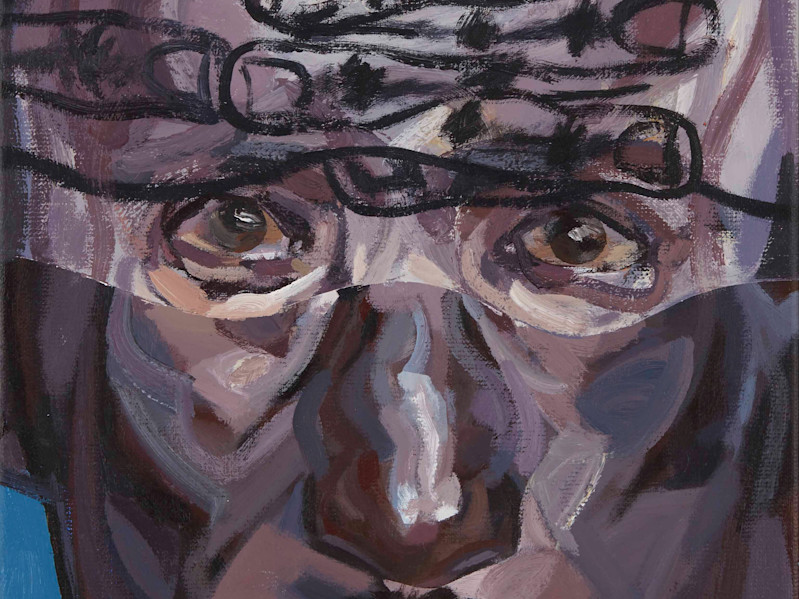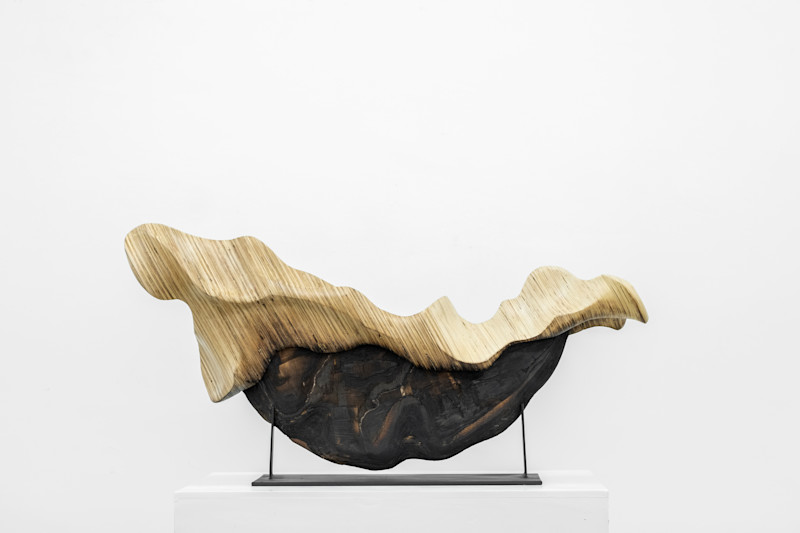Martina Müntzing
October 4, 2021
- Paulina Sokolow

Martina Müntzing, Sova räv, 2021, Oil on panel, 75 x 75 cm
The little fox’s red body rests in a graceful posture, with its black paws extended in an almost flirtatious gesture and its thick, bushy tail rolled up into an elegant curl. Is it asleep, or is it dead? If we peek in underneath its furry bangs, we’ll soon spot the keen, yellow eyes, but the obviously lifeless bird right next to it still causes doubt. In this painting, Martina Müntzing has blended two classics to create a third. This could either be a still life more specifically, a nature morte, a genre of painting that originated in central European Renaissance, in which subjects like household implements, foodstuffs, and dead animals are used as allegories of the impermanence of things and the shortness of life. There might also be another, rather Swedish, art-historical reference here, to Bruno Liljefors and his famous paintings of a fox in the woods. In his many portraits of foxes, this remarkably small predator, which enjoys a spot near the top of the Scandinavian food chain, represents the brutal force of life, and the Darwinian principle of “survival of the fittest.”
Martina Müntzing’s painting expresses a deep obsession with time. This subject first enters the works through the slow, meticulous approach she permits herself to take. Never is there a visible brushstroke to be found. A brushstroke is, after all, an account of time, in a way. By letting the work take time, and letting each single square millimetre gradually emerge and constitute its own separate microcosm, she seems somehow to freeze time. The melting snowmen in one of her most recent paintings thus become paradoxical. Caught, as they are, in a moment between existences, between solid form and the translucency of melted water, they too represent frozen time. Beyond the image, they would soon fall apart. Throughout her oeuvre, Martina Müntzing has painted children, both her own and others, most likely their friends. Martina Müntzing’s art marks out its own territory within the history of Swedish painting. There is a kinship here with Fra Angelico of the Early Renaissance, Caspar David Friedrich of the Romantic Era, the family painter Carl Larsson, and the decorative mystique of folklore. It is this band of faithful proponents of the possibilities of painting she has joined with in taking her place as one of the most prominent of her generation.
Martina Müntzing is represented at Moderna Museet in Stockholm, Göteborgs konstmuseum and other institutions.
Gallery

Martina Müntzing

Martina Müntzing, Sova räv, 2021, Oil on panel, 75 x 75 cm



